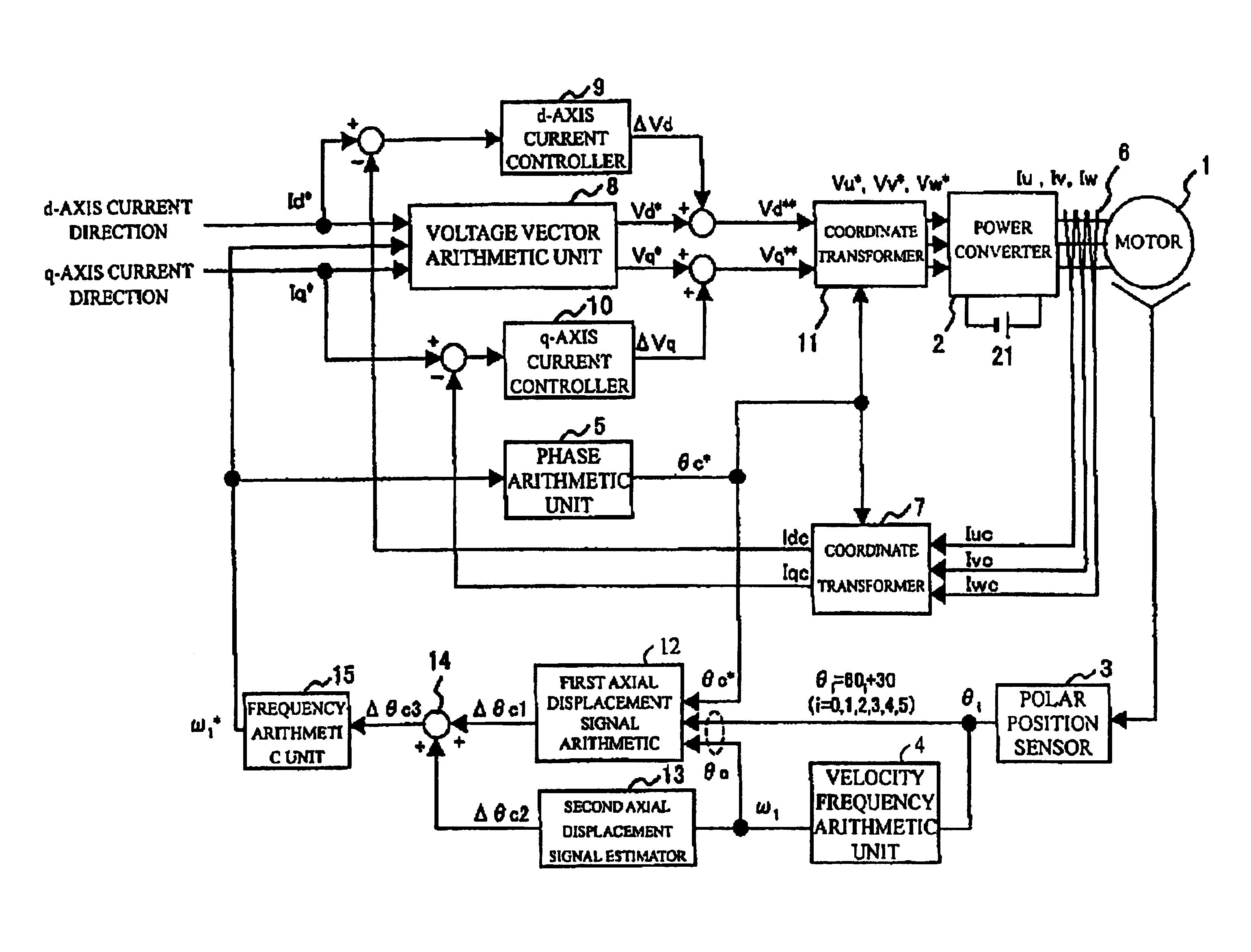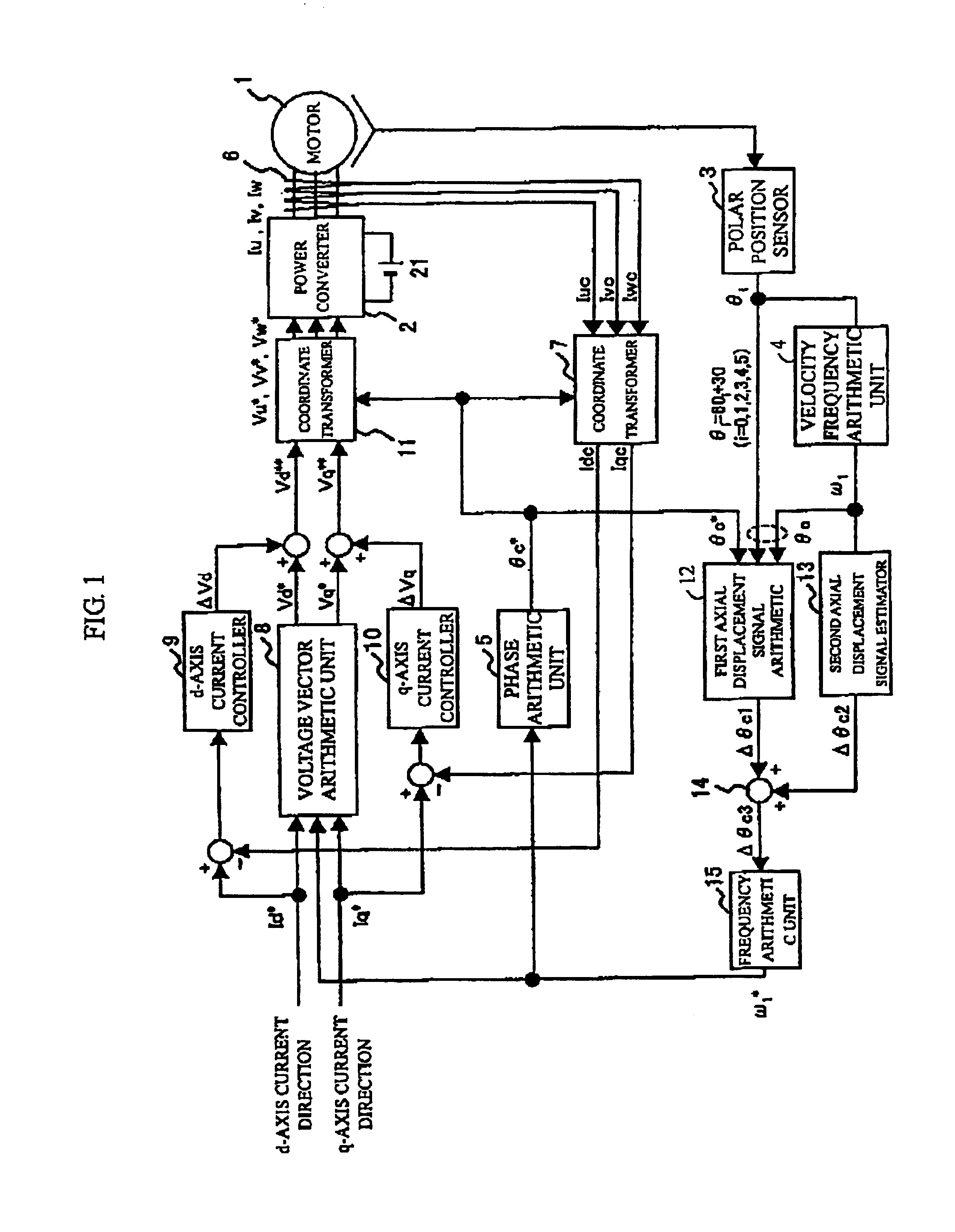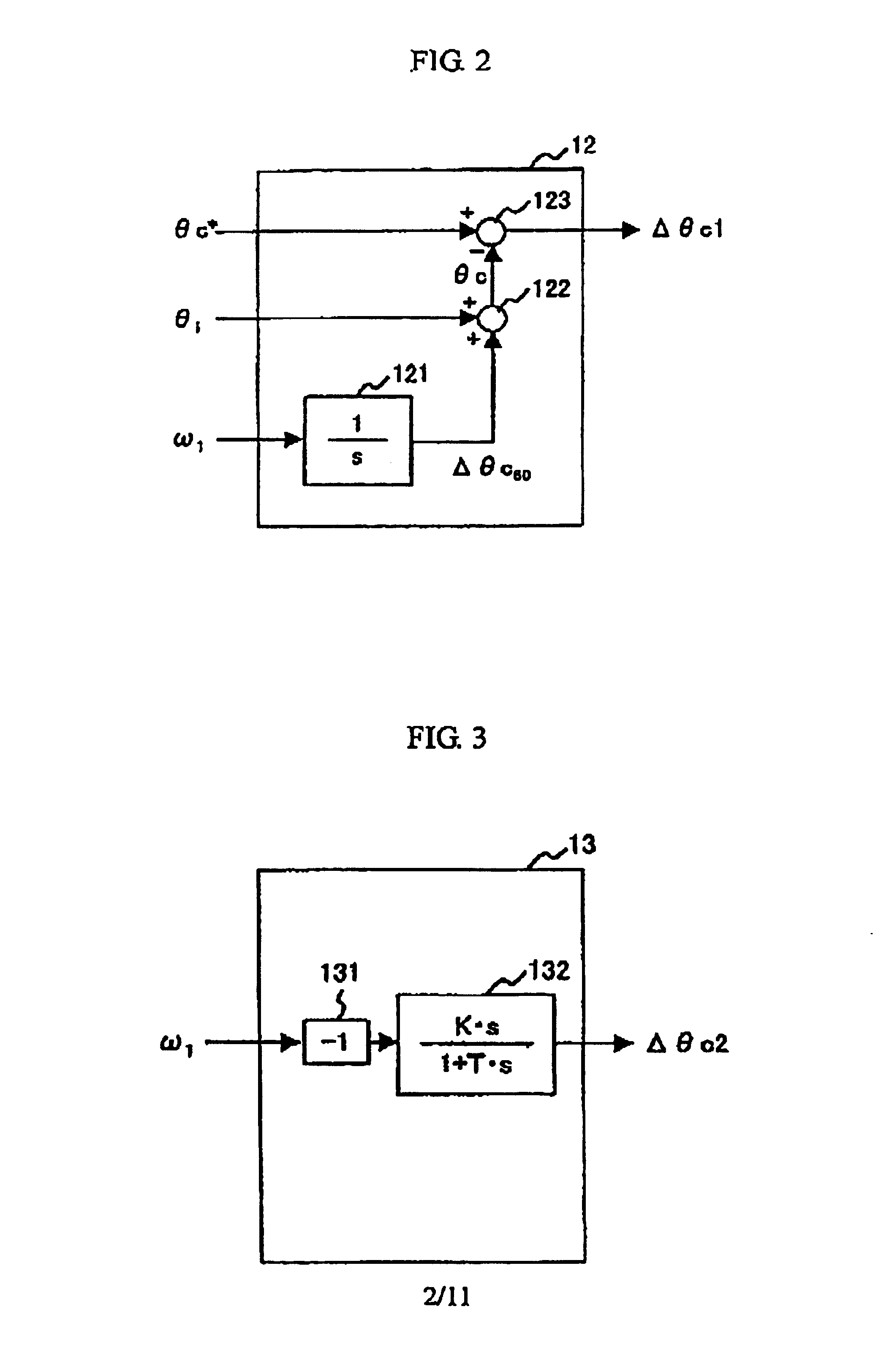Control method and control device of permanent-magnet type synchronous motor
- Summary
- Abstract
- Description
- Claims
- Application Information
AI Technical Summary
Benefits of technology
Problems solved by technology
Method used
Image
Examples
first embodiment
[0027]FIG. 1 is a block diagram showing the configuration of a control device of a permanent-magnet type synchronous motor equivalent to a first embodiment of the invention. The permanent-magnet type synchronous motor 1 is fed three-phase current of variable voltage and a variable frequency from a power converter 2 and is controlled at variable speed. The power converter 2 converts and outputs dc voltage from a direct voltage source 21 to three-phase alternating output voltage proportional to voltage directed values Vu*, Vv*, Vw*. A polar position sensor 3 senses a positional sensed value θi every 60° of electrical angle of the motor 1. A velocity frequency arithmetic unit 4 operates the velocity frequency ω1 of the motor 1 based upon the positional sensed value θi.
[0028]A phase arithmetic unit 5 operates a rotational phase direction θc* to the motor based upon a frequency directed value ω1*. A current sensor 6 senses three-phase currents Iu, Iv, Iw and outputs sensed values Iuc, Iv...
second embodiment
[0074]FIG. 5 is a block diagram showing the configuration of a control device of a permanent-magnet type synchronous motor equivalent to a second embodiment of the invention. The second embodiment is different from the first embodiment in that a second axial displacement signal (Δθc2) estimator 13A to which a q-axis current sensed value Iqc is input is used. In the first embodiment, the velocity frequency ω1 is input to the second axial displacement signal (Δθc2) estimator 13 and the second axial displacement signal Δθc2 is estimated using the control response angular frequency ωcPLL of the frequency arithmetic unit 15. However, in the second embodiment, the motor torque is operated based upon the q-axis current sensed value Ilc, proportional gain is multiplied by the torque operated value, a first-order lag process is executed and a second axial displacement signal Δθc2A is estimated. That is, when load torque τL is small, the similar effect of operation to that in the expression (...
third embodiment
[0078]FIG. 7 is a block diagram showing the configuration of a control device of a permanent-magnet type synchronous motor equivalent to a third embodiment of the invention. This embodiment is different from the first embodiment in configuration for acquiring d-axis and q-axis voltage directions input to a coordinate transformer 11 based upon d-axis and q-axis current directions and the other is completely the same. As shown in FIG. 7, a voltage vector arithmetic unit 8A operates voltage reference values Vd***, Vq*** based upon a motor constant, second current directed values Id**, Iq** and a frequency directed value ω1*. A d-axis current direction arithmetic unit 16 outputs the second d-axis current directed value Id** according to deviation between a d-axis current directed value Id* and its sensed value Idc. Similarly, a q-axis current direction arithmetic unit 17 outputs the second q-axis current directed value Iq** according to deviation between a q-axis current directed value ...
PUM
 Login to View More
Login to View More Abstract
Description
Claims
Application Information
 Login to View More
Login to View More - R&D
- Intellectual Property
- Life Sciences
- Materials
- Tech Scout
- Unparalleled Data Quality
- Higher Quality Content
- 60% Fewer Hallucinations
Browse by: Latest US Patents, China's latest patents, Technical Efficacy Thesaurus, Application Domain, Technology Topic, Popular Technical Reports.
© 2025 PatSnap. All rights reserved.Legal|Privacy policy|Modern Slavery Act Transparency Statement|Sitemap|About US| Contact US: help@patsnap.com



